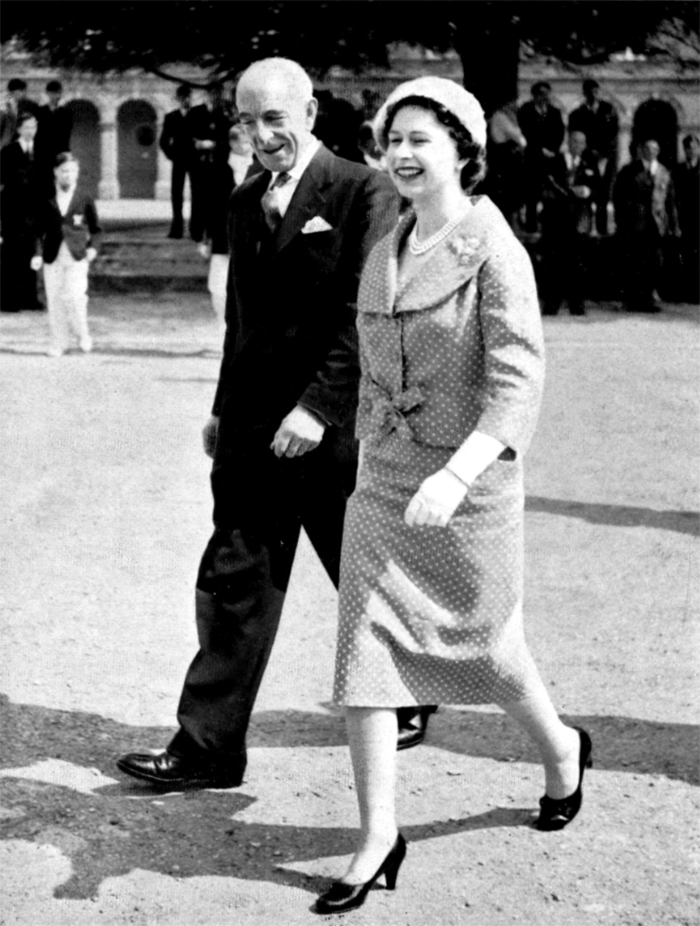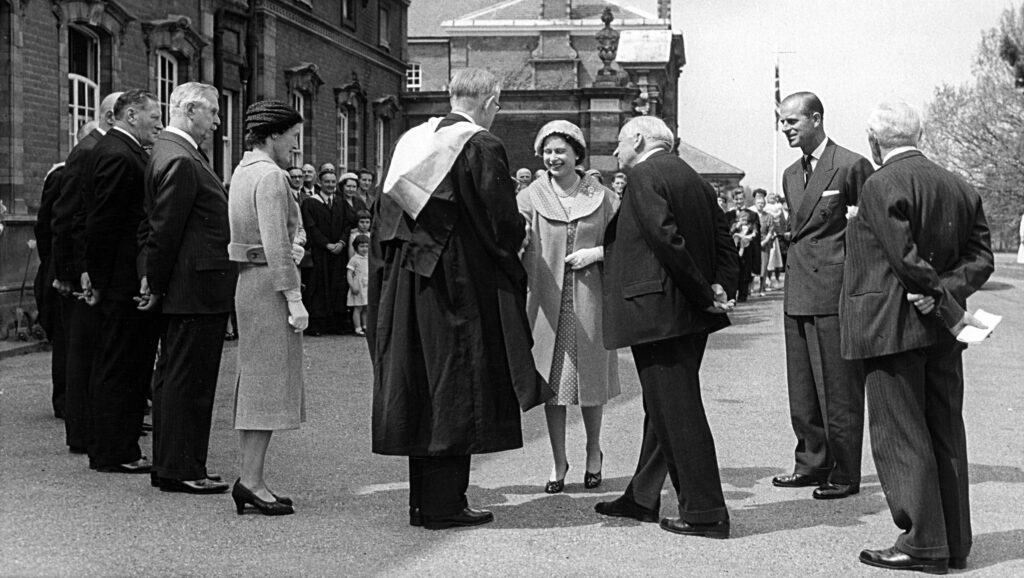The College Centenary
In 1959 Wellington College celebrated its centenary – one hundred years since the first students arrived. Events to mark this milestone took place throughout the year, but particularly in the summer term of 1959. Those Wellingtonians who were there at the time sent in memories of many aspects of the celebrations.
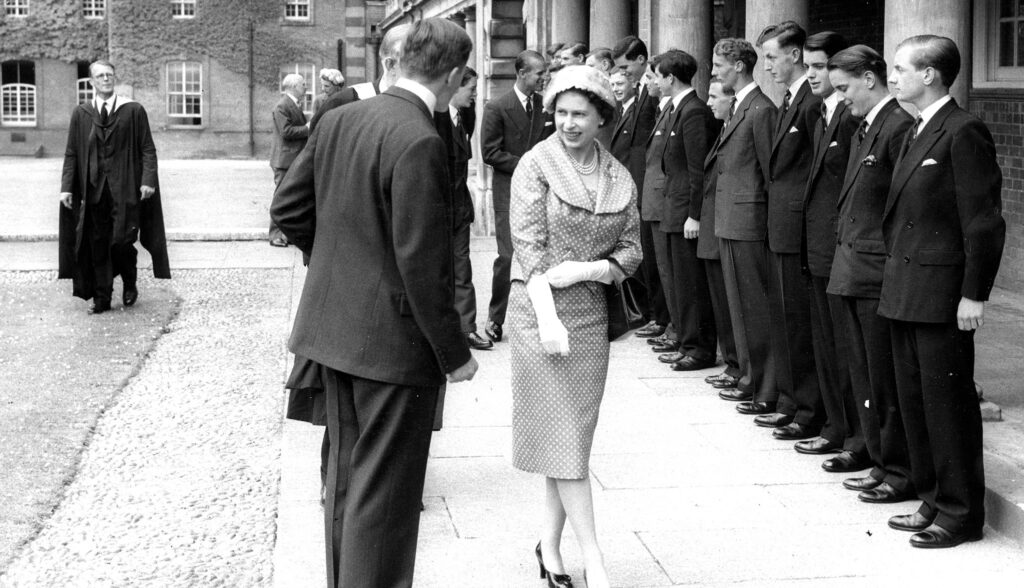
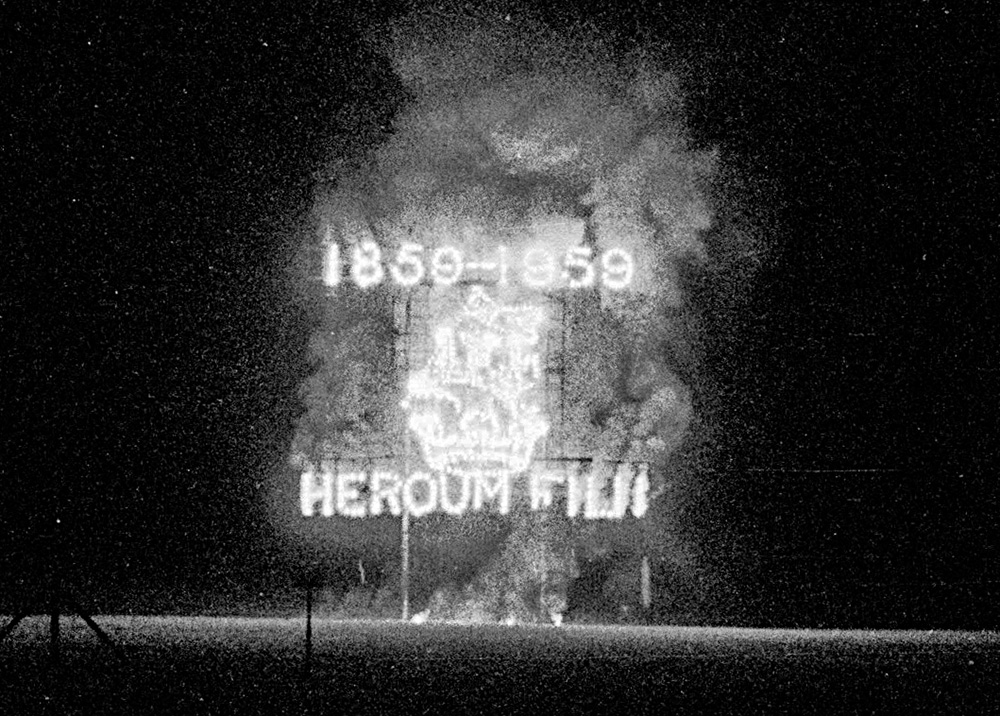
General impressions
Michael Crumplin (Orange 1956-60) spoke for many when he described the events of summer 1959 as:
‘Fantastic – parades, royal visits, fireworks, concerts and games, and leave-out.’
Tony Glyn-Jones (Picton 1954-59) felt the same:
‘This was undoubtedly the most memorable and enjoyable term of the five years I experienced at Wellington, when there was so much to celebrate in what turned out to be an exceptionally warm and sunny summer, with the College buildings and grounds looking so magnificent.’
He had a special reason for finding the term memorable:
‘I had a bicycle accident at the beginning of the summer term, which resulted in my right wrist being in plaster. This meant I could not play in the College band, nor take part in Guards of Honour for a while, but it gave me the opportunity to borrow my father’s 8mm Kodak cine camera. This precious piece of equipment enabled me to take some interesting film during that summer, as I was a spectator at various events at Wellington.’
Tony’s film, with footage of the royal visit, CCF annual inspection, and Speech Day, can be viewed on the ‘Films’ page of this website.
The royal visit

For most people, the highlight of the celebrations was the visit to College by Queen Elizabeth II and Prince Philip on 8th May 1959. On this, the longest of all the Queen’s visits to Wellington, the royal couple spent the whole day meeting staff and students, and getting an insight into College life.
After arriving at Great Gate and being greeted by the assembled VIPs, the Queen inspected the Guard of Honour provided by the CCF. Several of those involved recalled the details of this:
‘I was a Lance Corporal and part of the Guard of Honour. We were drilled in advance by the mighty RSM Lord from Sandhurst – at first a shambles as we couldn’t understand his parade ground commands, but all well on the day.’ Robert Hirst (Picton 1955-59)
‘I was a drummer in the band, and the band leader when the Queen and Prince Philip visited. I got to wear a red sash and carry the silver-tipped baton. I was very nervous about having to play God Save The Queen in front of the actual Queen. The fife players were not the greatest, and I knew they were nervous too and not likely to pipe with gusto. And I was right. I gave the signal to start, and the fifes feebly began, thankfully picking up steam in a few seconds. When the royals did their inspection, the Queen stopped in front of me and was about to speak when the Colonel moved her on. “Hosch,” as the one-eyed Colonel was called, was not very impressed with me and presumably felt I was not worthy of a chat with Her Majesty.’ Thomas Courtenay-Clack (Hardinge 1954-59)
But Michael Peck (Anglesey 1954-59) felt that the Queen’s visit was the highlight of his CCF career:
‘Much spit and polish and rehearsal, and a wonderful day.’
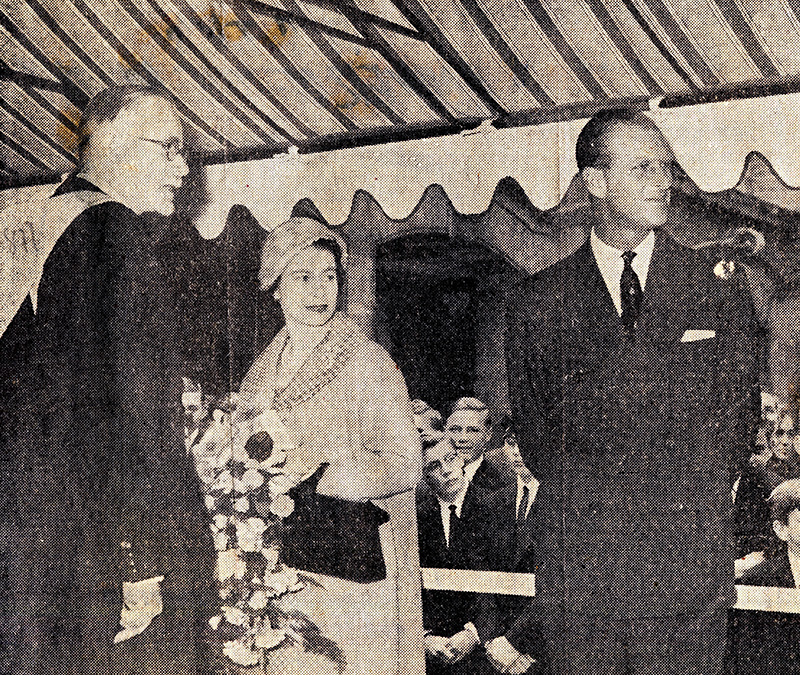
After this the Queen went into Front Quad, where she unveiled the stone plaques on either side of the door of Great School, commemorating her own visit and that of her great-great-grandmother, Queen Victoria. Michael Southwell (Orange 1955-60) recalled that she then ‘made a speech from a covered dais as she was not very tall.’
This was followed by a fanfare, specially composed for the occasion:
‘For the Queen’s visit, Mr Jarvis, the ex-bandmaster wind tutor, composed a three-trumpet fanfare, which was to be played by Monty Bissell, our brilliant American exchange student (on cornet, but nobody could tell the difference), Brian Preston, who had joined me in the horn section of the orchestra, and me. The Queen stood in front of the doors to Great School, while we three serenaded her from outside the Porter’s Lodge. To this day, I gasp at the sheer cheek of my entertaining the Queen on an instrument that I had never played before or since!’ Ross Mallock (Murray 1954-59)
The royal party was then introduced to the teaching staff over sherry in Great School, before proceeding to lunch in the Dining Hall. After this they embarked on a tour of the College, starting with Old Hall:
‘I did briefly meet the Queen; there were a few of us, maybe three or four, rehearsing something with Maurice Allen, the Director of Music, as the Queen walked in.’ Christopher Birt (Beresford 1955-60)
This was a rehearsal for the specially composed centenary opera, Music From Mars. A recording of it and a podcast dedicated to it can both be found on the ‘Podcasts and Audio’ page.

The Library and Chapel followed, then a visit to a dormitory: the Beresford, ‘swept and garnished as never before,’ according to the Year Book. Christopher Miers (Beresford 1955-59) explains why his room was the one chosen for the party to see:
‘I took a great deal of trouble making my room attractive, with paintings and things of interest. In the Summer term I had a window box with geraniums! When the Queen and Prince Philip visited College for the Centenary, the Master decreed that they should visit the Beresford and in particular, my room. It was incredible to recall that night that earlier in the day, she had been standing within an arm’s length of where I now lay in bed. Not many men can say that!’
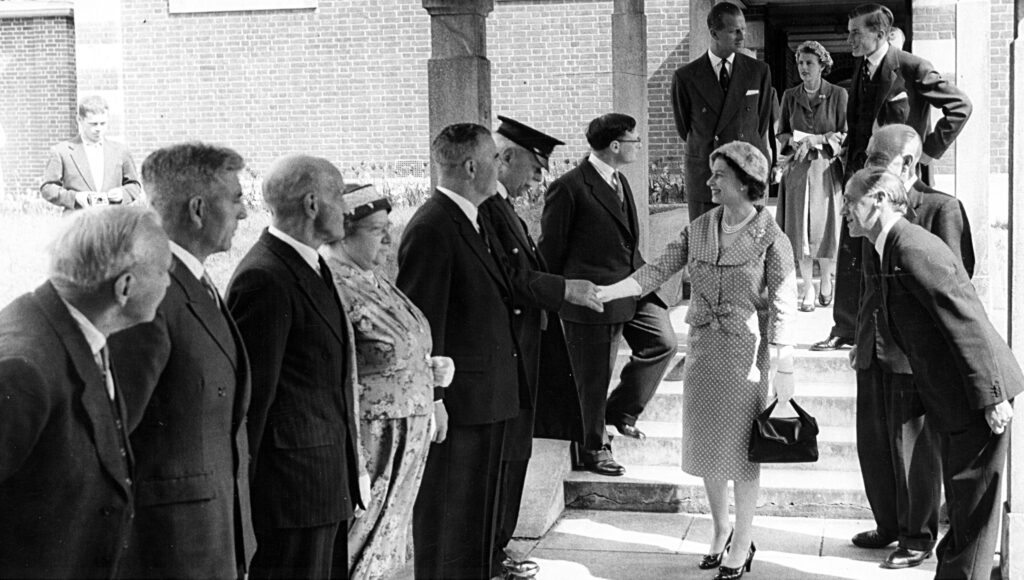
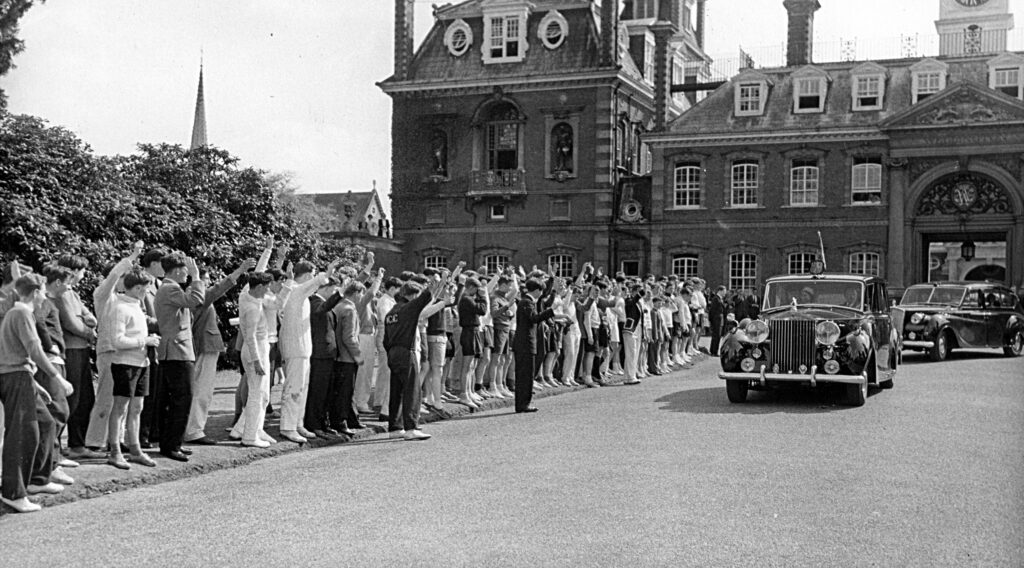
After this, the royal party visited the science laboratories:
‘I remember being spoken to in the Physics lab by HM the Queen and the Duke of Edinburgh.’ Christopher Napper (Lynedoch 1955-60)
They then drove along the Kilometre, before visiting Grubbies and finally the Sanatorium.
The official film of the whole visit can also be viewed in the ‘Films’ section of this site.
The CCF Annual Inspection
Although this was an annual event, the CCF inspection in 1959 was especially memorable to some, perhaps because it was conducted by famous Old Wellingtonian Sir Claude Auchinleck.
‘After I had been promoted from Company Sergeant Major to Regimental Quartermaster Sergeant, I became the Junior Leaders’ instructor, and led the March Past on Speech Day in 1959. Field Marshall Sir Claude Auchinleck took the salute.’ Robin Ballard (Orange 1955-59)
It is not known whether it was in rehearsal for this, or one of the Guards of Honour during that term, that the following incident occurred:
‘There was so much happening at Wellington throughout this final term of mine, but if I am asked whether I have an amusing memory, I recall a shambolic private in the CCF who seemed to be permanently in a state of chaos. He had a bit of a speech impediment which meant he found it difficult to pronounce his “R”s, which came out as “W”s. This meant that his rifle was referred to as his “wifel.” On arriving on parade one day, this individual did not have his weapon with him. The sergeant in command bawled at him, asking why he had not got his rifle. In an unusually quick response, the reply came out “It was missing, so it seems that someone has committed adultery with my wifel, Sir!” Tony Glyn-Jones (Picton 1954-59)
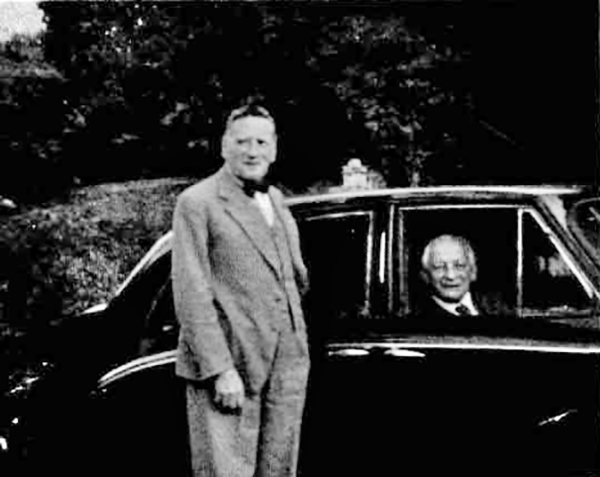
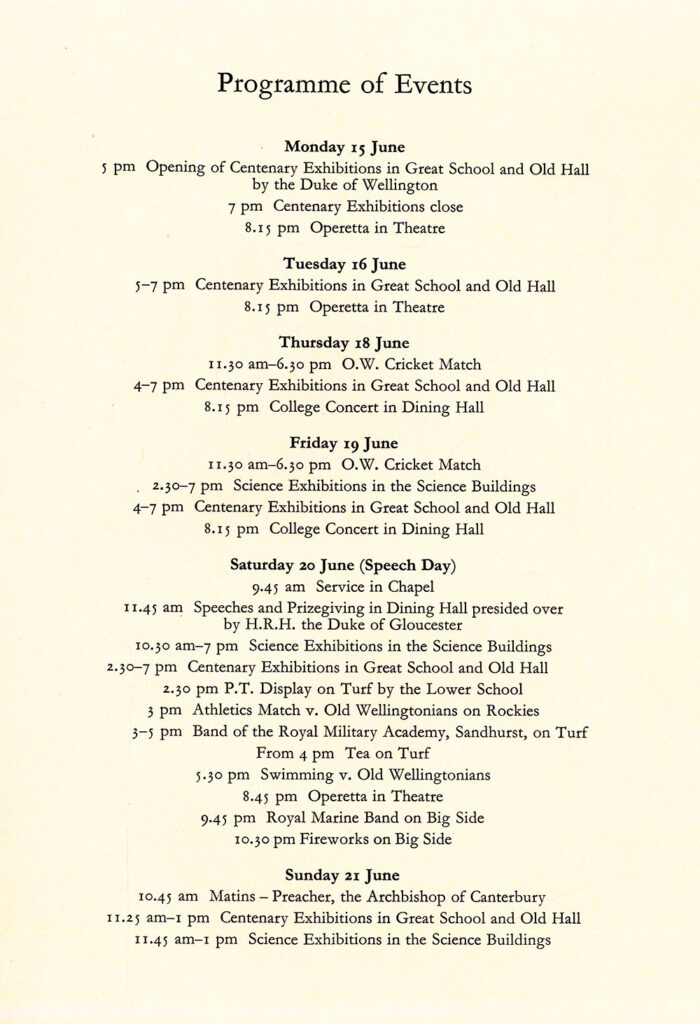
Centenary Week
The celebrations culminated in a week-long programme of events, beginning on 15th June. The accompanying illustration, showing the list of activities in the souvenir programme, shows the scale and scope of what was on offer.
Old Wellingtonians returned to College for many of these events, as Norman Tyler (Hill 1947-52) remembered:
‘It was rather like a super Speech Day, to return to College and meet old friends.’
The Year Book reported that over five thousand Old Wellingtonians and guests were served tea on Turf on 20th June, an amazing achievement.
Another event of the week was the first showing of A Visitor from the Past, a film made entirely by College students under the guidance of Mr Waghorn. This 14-minute film, complete with soundtrack, imagines a visit by the first Duke of Wellington to the College that bears his name, and contains footage of a year’s events in the life of the school. It too can be watched on the ‘Films’ page of this website.
Other celebrations included a Reception at Apsley House in June, hosted by the Duke of Gloucester, and a Centenary Dinner for OWs at College in December.
The Exhibition
Planned for eighteen months in advance, a central part of the week was an exhibition in both Great School and Waterloo Hall, showcasing the College’s history and its connection with the Great Duke.
Richard May-Hill (Hopetoun 1957-61) found that this left ‘a much more memorable impression’ than some of the other events, continuing, ‘The Director of Art, A C Eccott (ACE), had made a very large model of the Lying-in-State of the Great Duke, which occupied most of Great School. There were many other exhibitions, including I recall the display of the Schneider Trophy, lent by an OW. I believe that the Duke of Wellington loaned a number of personal items from his family’s collections.’
In fact, the Year Book tells us that the model had been created by ‘Mr and Mrs Eccott and a team of over 80 boys,’ and according to one press report, it was fifteen feet long and eight feet wide!
The artistic Christopher Miers (Beresford 1955-59) was in charge of another exhibit, with rather dubious results:
‘For the Centenary exhibition I made a diorama of the laying of the foundation stone by Queen Victoria, and helped with some of the other exhibits. These activities distracted me from concentration on my ‘A’-level exams.’
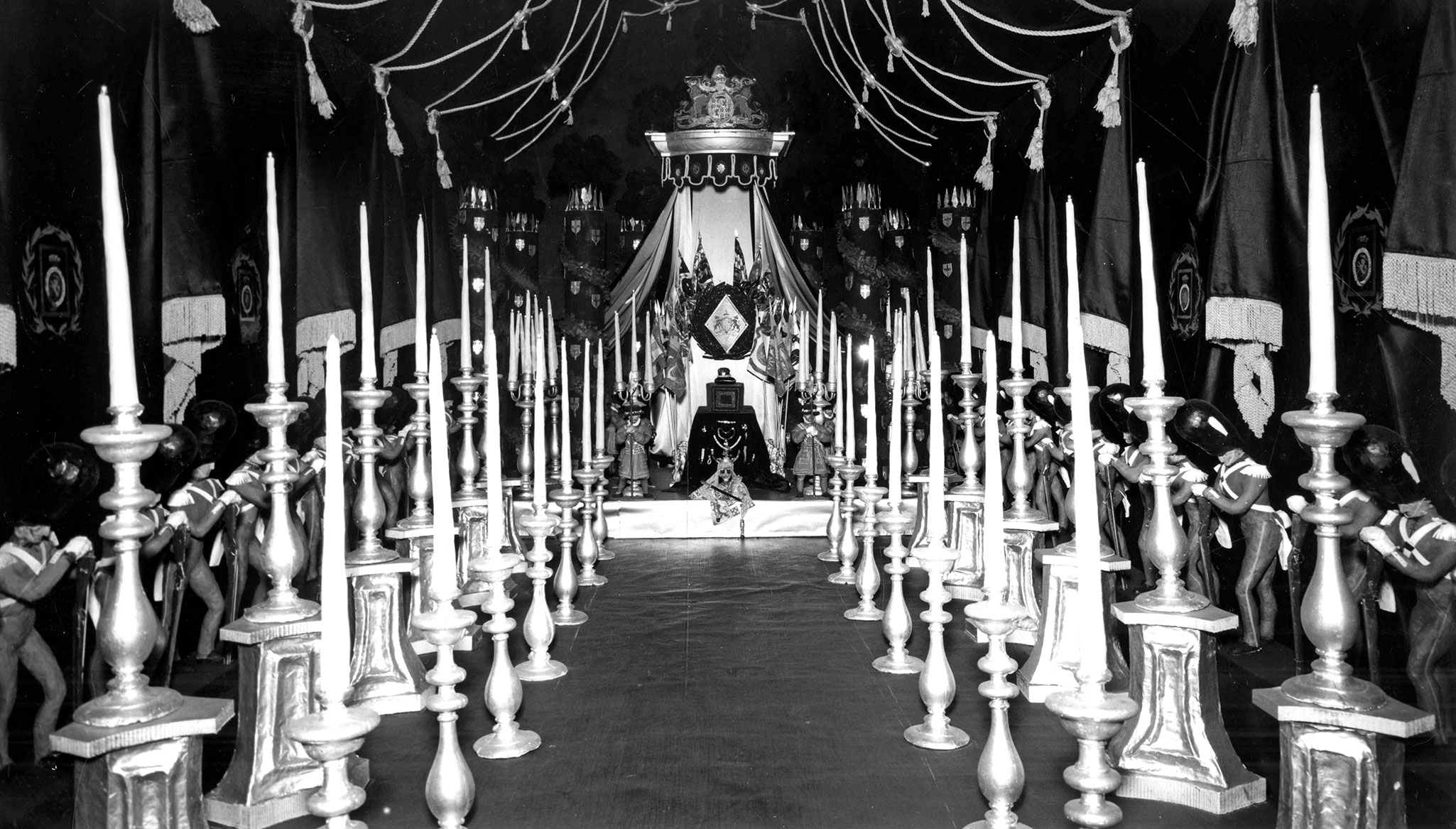
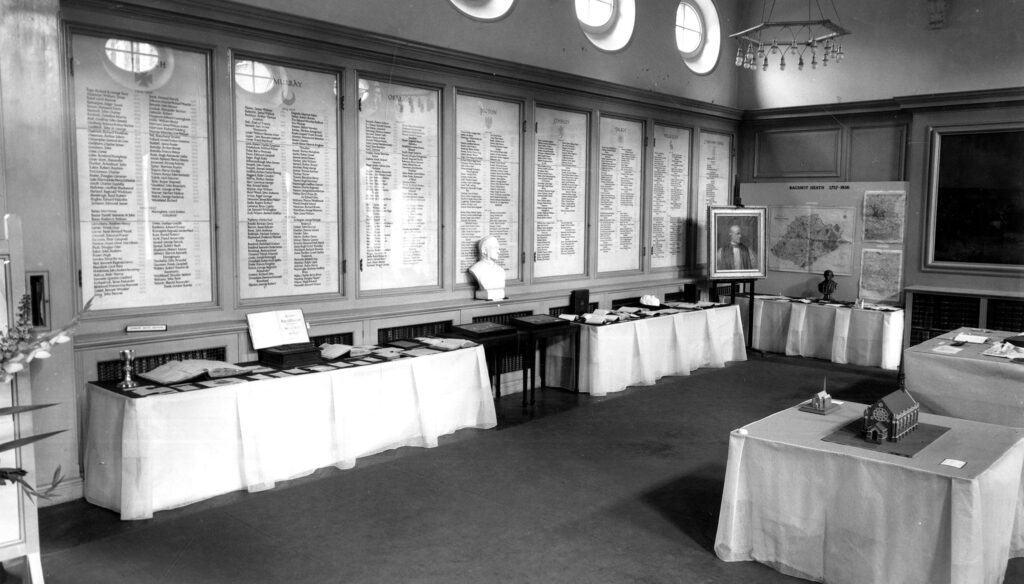
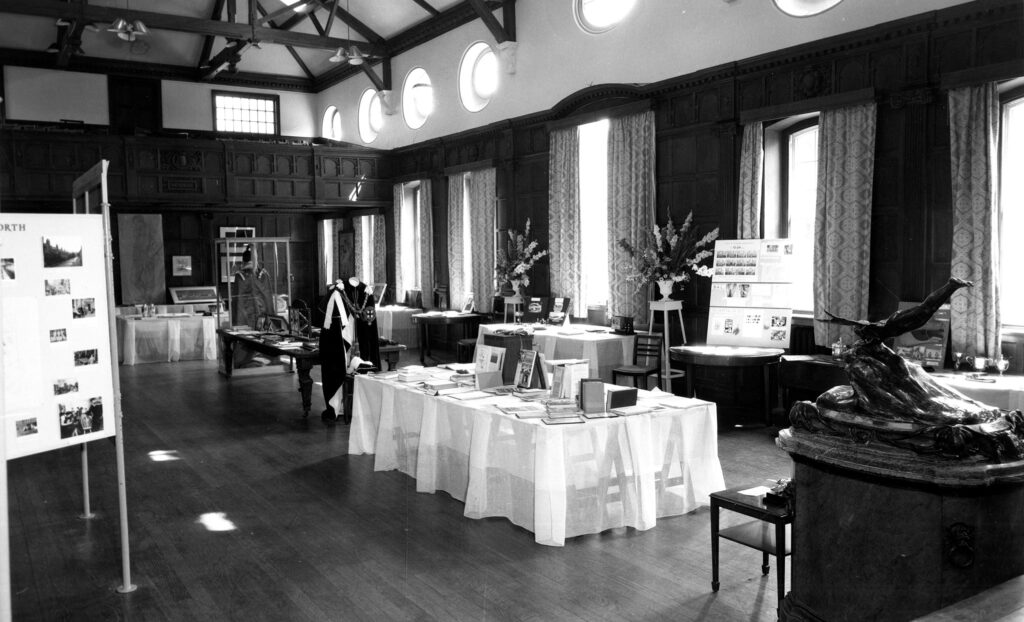
The Centenary Concert
The Centenary Concerts took place in the Dining Hall on 18th and 19th June, and both students and OWs took part. It is not surprising that the second evening’s finale was particularly memorable:
‘A great piece de resistance was the Centenary Concert in Hall, climaxing with two “armies,” approaching from the Combermere Quad and the kitchens, firing blanks and thunderflashes in the finale of Beethoven’s Wellington’s Victory at the Battle of Vittoria.’
Jerry Yeoman (Anglesey 1955-59)
Although one participant remembered it for a different reason:
‘Concert conducted by a well-known German [OW Royalton Kisch] who came down to conduct the school Orchestra, and I had to play the triangle in Beethoven’s something. Sounds funny, but the timing was tricky and he stopped the rehearsal – “who is playing ze triangle – you haf not got it right, vot is your name?” Luckily, the Assistant Music Master took my place. Horrific – I still shudder.’ Michael Moore (Lynedoch 1955-60)
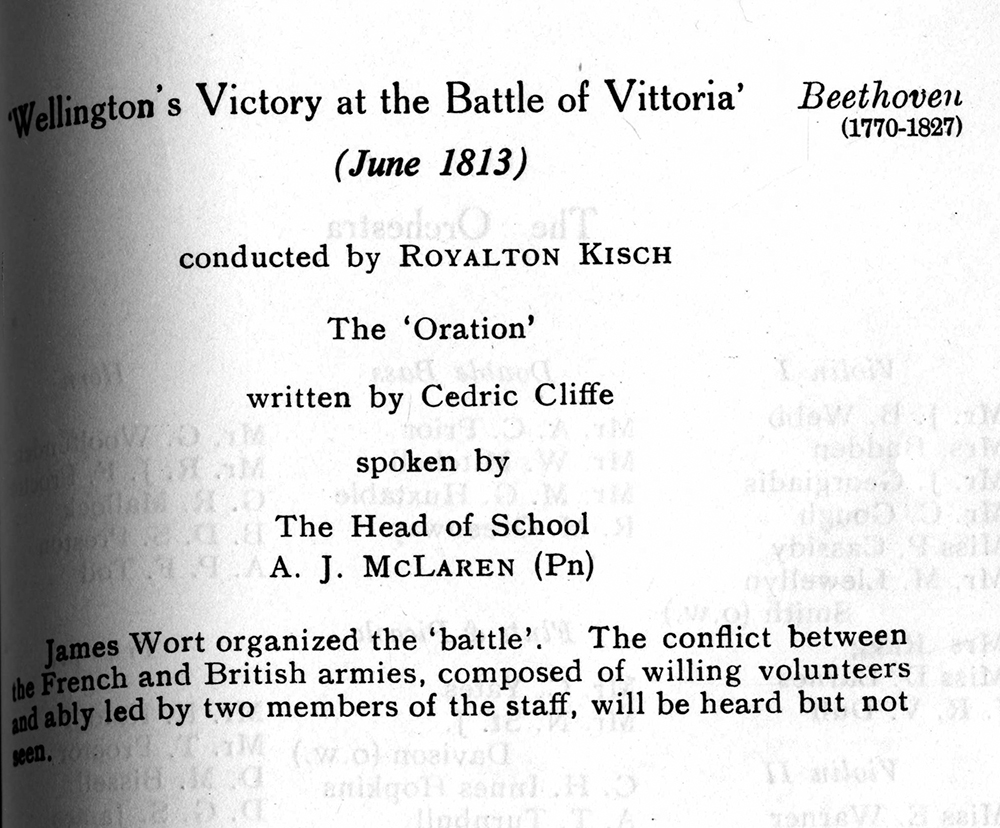

Not only Royalton Kisch but several other Old Wellingtonian musicians were involved with the concert, including successful film composer John Addison, who wrote a special piece for it.
Ross Mallock and his friend Brian Preston were the two horn players selected to perform the piece, an experience which made a lasting impression:
‘The Centenary Concert was extraordinary. A decision had been made that there should be a ‘Wellington connection’ with both the programme and the performers. For Brian Preston and me, the most significant item was a piece by John Addison for piano, horn duet and orchestra. An OW, Addison was best known for his film scores for some of the Ealing comedies and later for blockbusters like Tom Jones, The Entertainer and A Bridge Too Far.
The excitement of performing a world premiere at our Centenary Concert was almost overwhelming, and to give us a head start, Brian and I bought new instruments on which to play our precious solos.
As the date for the concert approached, there was no sign of the music and there was some concern that the piece, entitled Suite for Wellingtonians, might have to be taken off the programme. However, with a fortnight to go, Addison turned up one evening with Maurice Allen and, with another OW, pianist Courtney Kenny, we played it through for the first time. It was a wonderful, tuneful, light-hearted piece which, conducted by the composer, went down a storm. In the final movement, John Addison got so carried away that he struck his music stand and the top six inches of his baton broke off and spun into the second violins.
The following day, I met him walking up the road from Grubbies and we fell to chatting on the way back to the Music School. Not yet forty, he appeared totally unaffected by his fame as a top film composer, and I found his conversation stimulating. He was perfectly happy to discuss the technicalities of film composition with a callow schoolboy of eighteen, and I would happily have gone on talking to him all afternoon. To be treated as an adult by a man like that was heady stuff.’ Ross Mallock (Murray 1954-59)
A final thought
The College Centenary was certainly a great occasion, with celebrations on a scale which would not be repeated for another fifty years. However, it was Richard May-Hill (Hopetoun 1957-61) who commented on one aspect of the proceedings which he found poignant:
‘To this day, I consider that it was sad that the Master [Graham Stainforth] missed part of this landmark term, due to serious ill health and an operation. As a Foundationer, a Tutor and latterly the Master, it would have been the culmination of his achievements at Wellington. However, R G Evans, for whom I had a high regard, rose splendidly to the occasion, as well as presiding over College for most of the entire summer term.’
According to the Year Book, it was the Lent term which Stainforth missed, but although he returned to duties in the summer, he was ably and substantially supported by Mr Evans. Photographs show that although Stainforth greeted the Queen and the Duke of Edinburgh when they arrived at Wellington, it was Evans who escorted them on their extensive tour of the College.
